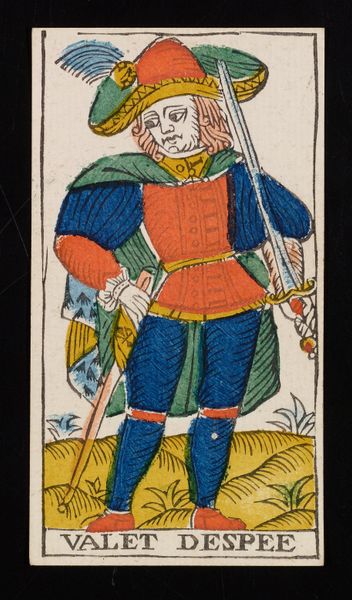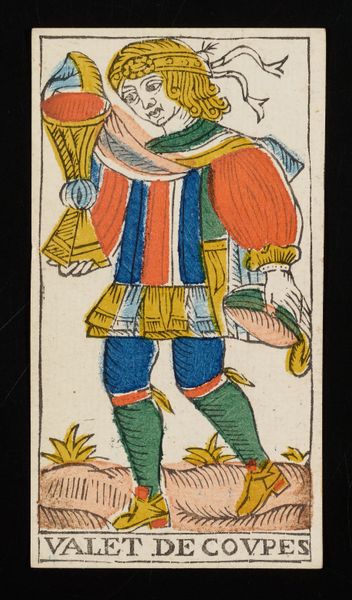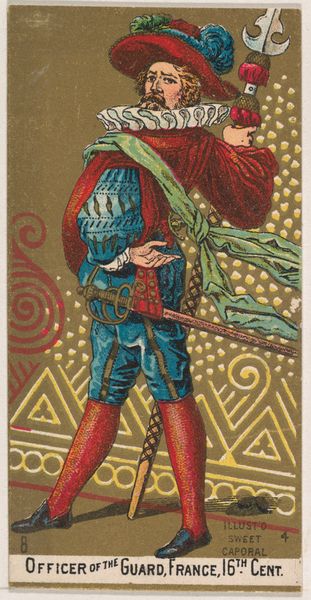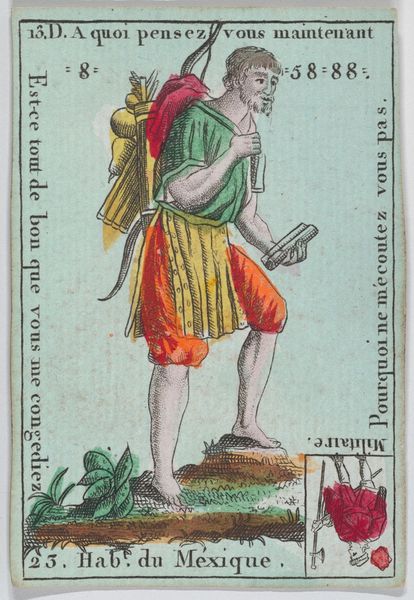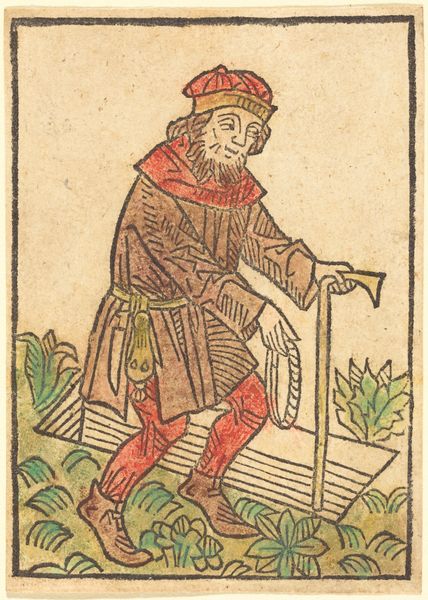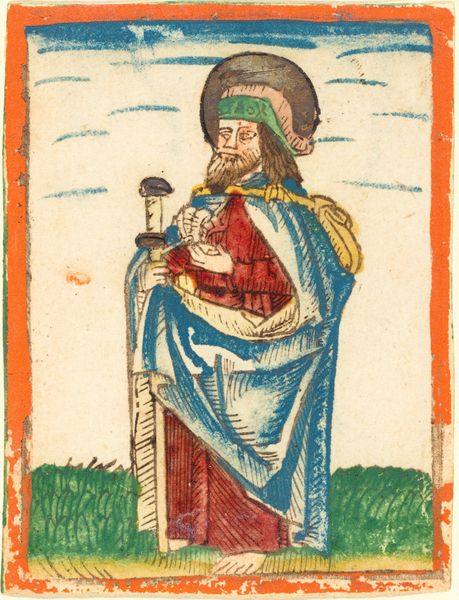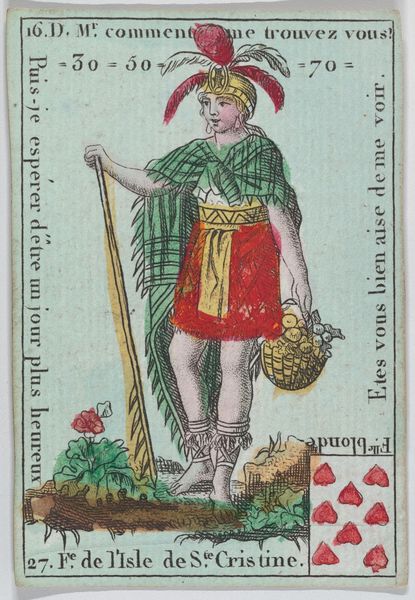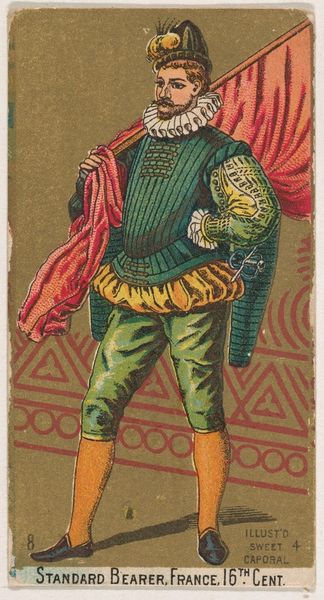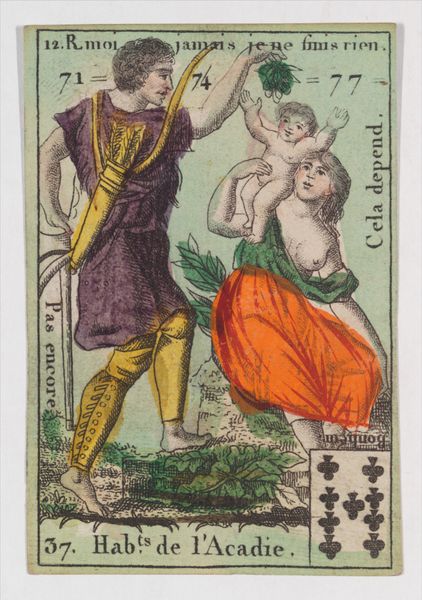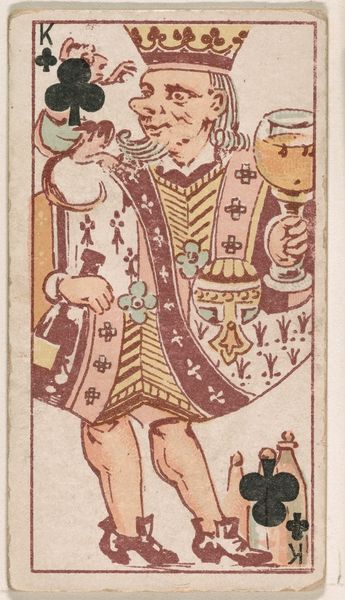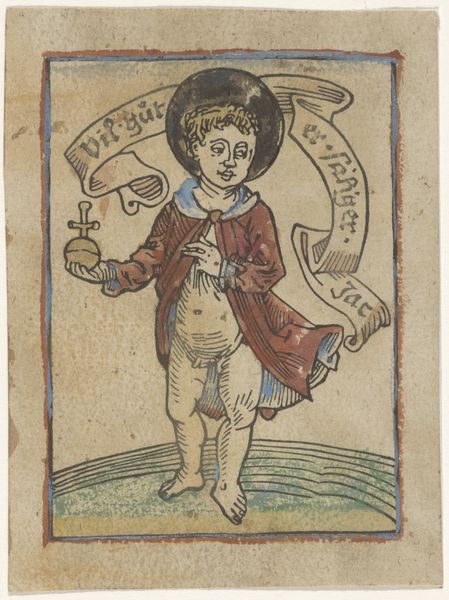
print, woodcut
#
medieval
# print
#
figuration
#
woodcut
#
genre-painting
#
northern-renaissance
Copyright: National Gallery of Art: CC0 1.0
Editor: This woodcut, "Dracole Wajda," dating back to around 1500, presents a figure that feels both whimsical and unsettling. There's a distinct theatricality to his pose, framed by those almost cartoonish floral elements. What do you see in this piece? Curator: What strikes me is how this seemingly simple figuration participates in complex historical narratives. "Dracole Wajda," a representation of Vlad the Impaler, is being circulated as a broadside during a period of immense political anxiety concerning the expansionist threat of the Ottoman Empire. Do you notice the ornamental frame almost… cages him? Editor: Now that you mention it, yes, it does! I hadn't considered the broader context, only the aesthetic choices. Curator: This visual containment speaks to a contemporary anxiety. Representations such as these – produced for mass consumption via the printing press - often reduced complex figures to monstrous caricatures in the name of political messaging. Is this not how so many public figures are now caricatured on social media? Editor: So, the colourful aesthetic almost masks the more troubling underlying message? Curator: Exactly. The apparent naivety of the woodcut, its "genre-painting" feel, disguises the demonization of a cultural and political other. The "Dracole Wajda" print becomes less about accurately depicting an individual and more about constructing a narrative of fear, designed to unite the “Christian” West against a common enemy. Consider too that 'genre-painting' by definition shows scenes of everyday life and the association of Vlad with this gives an insight into how his character may have been viewed. Editor: That’s a powerful interpretation, reframing the entire image for me. It highlights the crucial link between art and propaganda. I’ll definitely look at art historical context with a new perspective. Curator: Indeed, examining the socio-political landscape reveals the layers of meaning embedded within seemingly simple artworks.
Comments
No comments
Be the first to comment and join the conversation on the ultimate creative platform.
